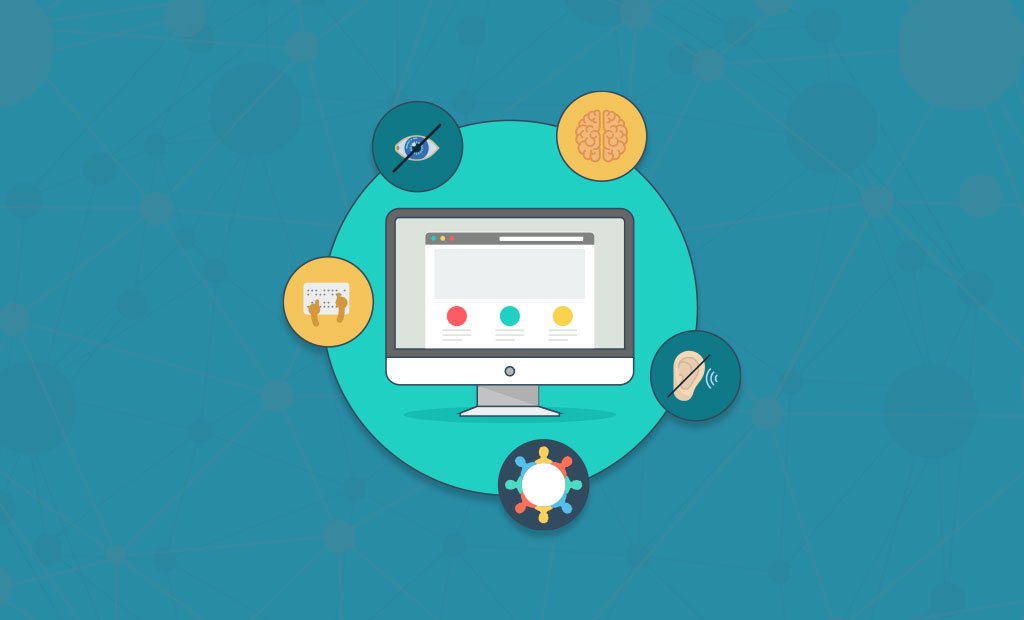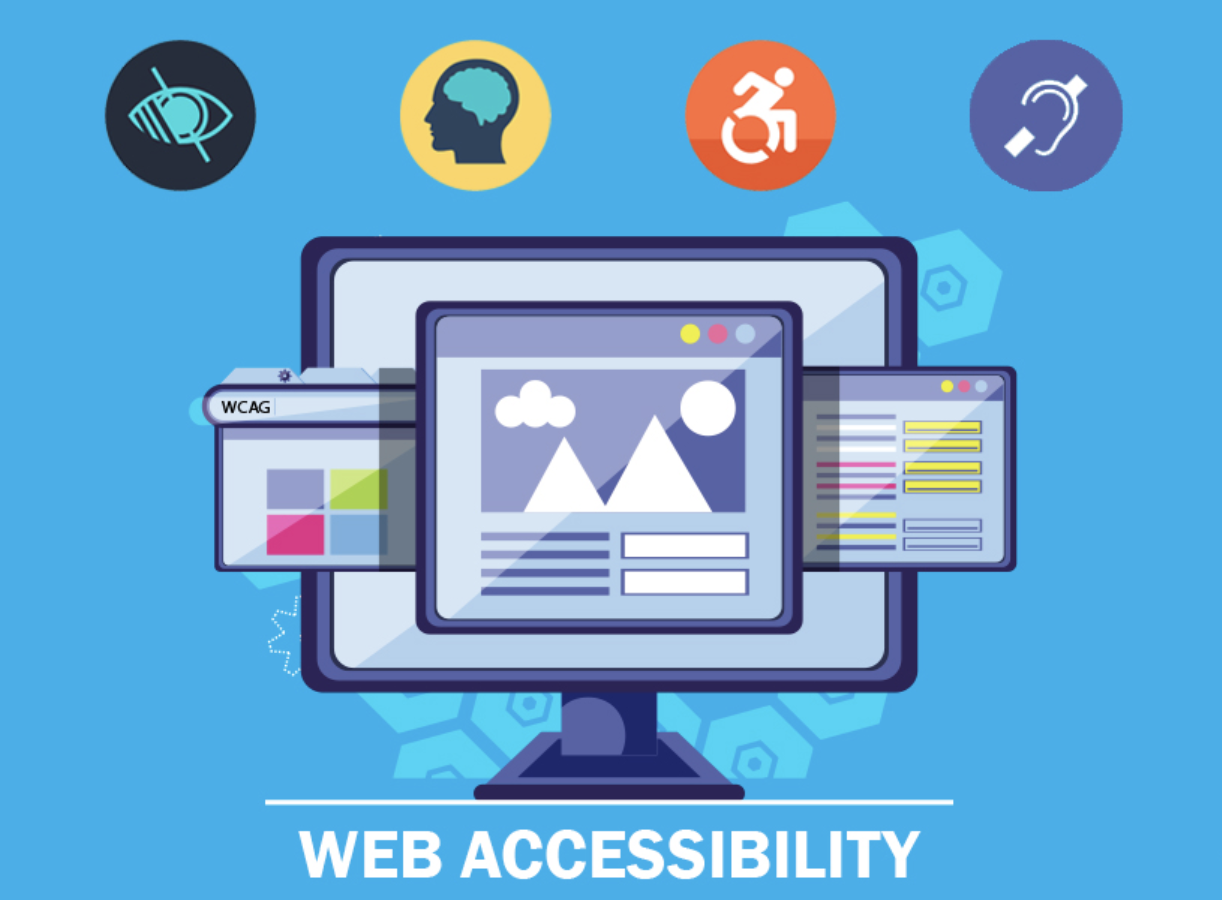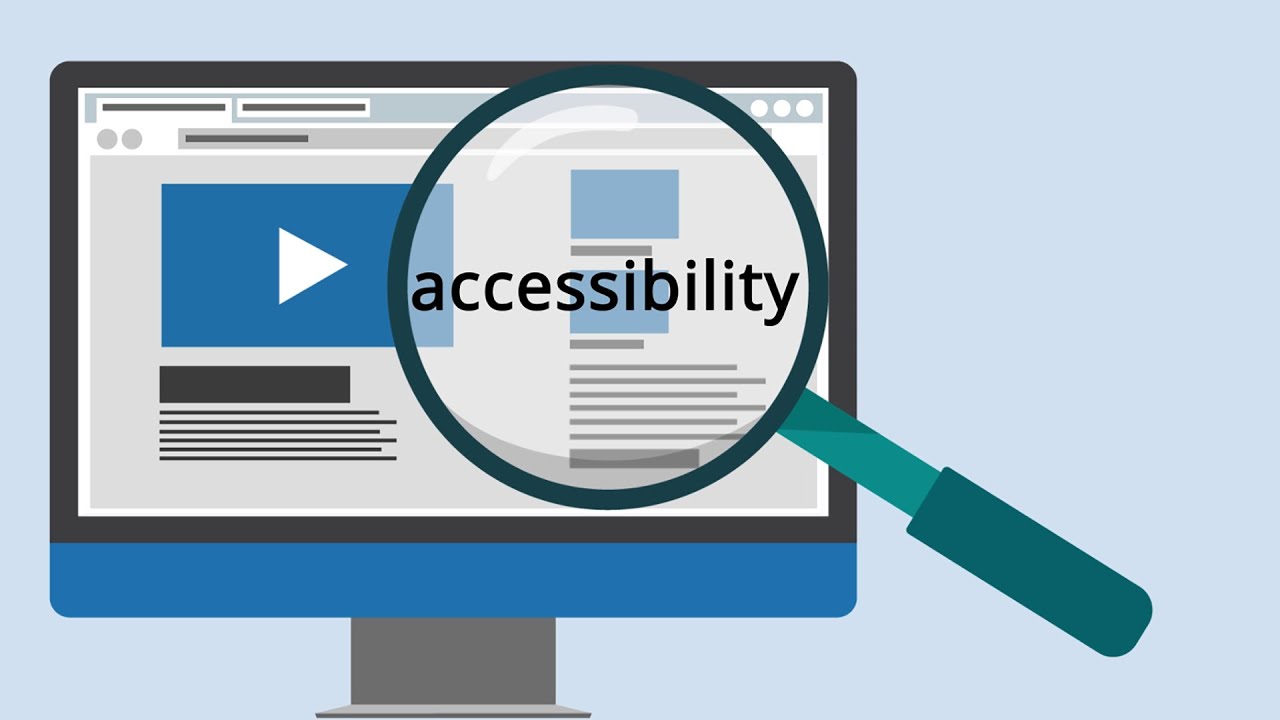When do we need web accessibility?
Have you ever considered how a blind football fan reads the latest news about their favorite team?
Or how does a person who is paralyzed from the neck down go about doing their monthly food shopping online?
Or how a deaf person might burst out laughing when viewing a stand-up comedy video?
That's correct!
People with disabilities may use the internet just like everyone else – but only if websites and mobile applications are planned and created with differing abilities in mind.
This is when web accessibility comes into play.
Fortunately, implementing accessibility is not difficult.
You just need to grasp the underlying issues that might make a site difficult or impossible to use for some individuals.
After that, you may take action to avoid such errors and make your site more pleasant to all users.
What Is Web Accessibility?
We've all felt irritated by a slow-loading website, staring at a poorly-designed typeface, or despair at attempting to navigate a mobile-unfriendly page.
While these issues may be minor annoyances for us, they can severely limit internet access for those with impairments.
Web accessibility is the requirement for websites to use tools and technology intended to assist a person with disabilities' perception, knowledge, contribution, navigation, and engagement with the site.
Integrating accessibility may appear scary to people who are unfamiliar with it, yet it is a critical component of user experience.
Web accessibility should be included in the web development and design process rather than being added as an afterthought.
What Kinds Of Disability We Are Talking About?
Persons with disabilities, like people without disabilities, are as different as their disabilities.
The main takeaway here is to go beyond your own computer and how you use the internet and begin learning about how others use it - you are not your users.
The most important forms of disabilities to consider are listed here, along with any specific tools they employ to access web content(known as assistive technologies, or ATs).
Why Is Web Accessibility Important?
People with disabilities should have equal access to information as those who do not.
Fortunately, technologies exist to minimize or eliminate the obstacles to their digital access.
The availability of these benefits assures that everyone, regardless of age, physical or mental abilities, has access to the internet and a positive web experience.
A robust accessibility plan provides financial benefits in addition to making the internet a more inclusive place for everyone.
Accessibility is a component of design and development that affects practically every aspect of the production of a website.
It combines mobile-friendly designs, device independence, multi-modal interaction, usability, search engine optimization(SEO), and other elements.
Websites that are easily accessible can have better search results, save maintenance costs, reach a larger audience, and exhibit corporate social responsibility (CSR).
As a result, having a well-designed, accessible website not only makes your site accessible to persons with disabilities but may also dramatically improve the user experience for all site visitors.
Why Making Your Website Accessible Should Be A Priority
As you can guess, the advantages of having your site accessible to users are enormous.
Simply from a humane standpoint, this is an important thing to accomplish since it guarantees that persons with disabilities are not excluded.
Of course, boosting accessibility on your website has several advantages.
Most importantly, it immediately broadens your potential audience.
The math should be obvious.
If more users are able to utilize your site, you've simply dramatically increased your prospective user base.
This may put you ahead of rivals that have not taken the same measures toward accessibility.
By considering accessibility, you may benefit every one of your visitors, not just those that fall into the categories we mentioned previously.
Many of the factors that go into making your site more accessible will also improve its overall design and usability.
Along the process, you'll be making your site more adaptable and "future-proof."
Finally, it's worth noting that many nations have regulations governing web and software accessibility.
As a result, you may be legally obligated to meet specified accessibility requirements.
Web Accessibility Standards
The most recent WCAG and standards provide four key concepts to consider when developing an accessible website.
These four principles include online accessibility recommendations that you may refer to and try to implement on your site whenever and wherever practicable.
Perceivable
Visitors must be able to see the material and information displayed on your website, as well as understand and be aware of it.
Remember that "perceive" does not always imply "see with one's own eyes" - users who are blind or have impaired eyesight sometimes use screen reader software, which turns printed text into synthesized audio or braille symbols.
Operable
Websites that are operational can be utilized without interfering with the user in any manner.
Every aspect of the site's operation is available to all users, from browsing a page to selecting a link from a menu to playing and stopping video and music.
In general, the most usable websites are basic and uncomplicated, with no extraneous functionality that might hamper users with impairments and limits.
Understandable
Visitors should be able to understand all material on your website, including textual and visual design elements.
Jumbled, verbose language is not only difficult for the average visitor to comprehend.
It also restricts access to those with cognitive issues and disabilities, as well as those who do not speak the major language of your site.
This approach also applies to the structure of your website.
Your pages must be intuitively arranged, and your navigation must be easily accessible to users on the most, if not all, of your pages.
Robust
All visitors, including those who use assistive technology such as screen readers, should be able to readily comprehend and consume the material on your site.
This idea boils down to creating HTML in a way that assistive technology can parse your code without a visual reference.
People Also Ask
What Do You Mean By Web Accessibility?
Web accessibility refers to the design and development of websites, tools, and technology so that persons with impairments may use them.
People can perceive, comprehend, navigate, and engage with the Web in particular ways.
What Is An Example Of Web Accessibility?
This might relate to specific pieces, features, or the entire online experience.
Important accessibility elements commonly include:
- Alt text for images
- Accessibility to the keyboard
- Structure of sequential headings
- Linkable resources
- Navigation that is consistent
Why Do We Need Web Accessibility?
Making your website accessible ensures that all prospective visitors, including those with impairments, have a positive user experience and can readily access your content.
By applying best practices for accessibility, you are also increasing the site's usability for all users.
What Is HTML Accessibility?
This entails employing HTML components that are appropriate for their intended function as much as feasible.
You may be wondering why this is so significant.
After all, you can use CSS and JavaScript to make just about every HTML element behave any way you want.
Conclusion
After you've deployed web accessibility solutions, you should check your site for compliance with the appropriate standards.
The process, however, does not finish there.
Throughout the creation or redesign of your website, your site should be assessed.
This can guarantee that problems are identified early and readily rectified.
Web accessibility isn't the most difficult problem to solve.
All it takes is a willingness to learn about common problems and their remedies.
A solid rule of thumb is to never leave web accessibility planning till the end of the website design process.
Rather, web accessibility should be included from the outset of site design and creation, and then into each successive project.


